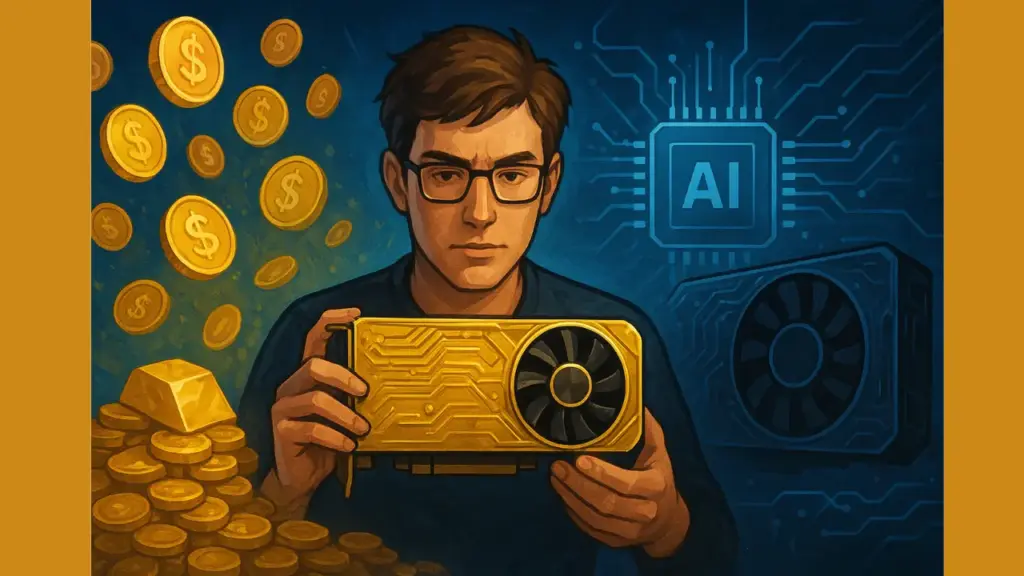Introduction
Artificial intelligence is advancing at record speed, and Elon Musk’s xAI wants to lead the race. The company is making headlines with its plan to buy millions of GPUs for training large-scale models. But does bigger hardware automatically create smarter AI? Or could this massive spending signal the start of another bubble in tech?
This blog explores xAI’s GPU strategy, why scaling has limits, and how smarter designs may hold the real key to progress. We’ll also look at the financial risks and lessons from past bubbles.
1. The GPU Arms Race
Modern AI wouldn’t exist without GPUs. These chips make it possible to process huge amounts of data and train models with billions of parameters. Every major breakthrough—from early GPT models to today’s multimodal systems—was powered by GPU clusters.
Elon Musk is betting heavily on this link. By gathering one of the largest GPU clusters in the world, xAI aims to push ahead of competitors. The idea is simple: more compute, more intelligence.
But the assumption is flawed. Bigger clusters can train larger models, but size does not equal smarter reasoning. Evidence already shows that scaling is hitting a plateau, and improvements per GPU are shrinking.
2. The Diminishing Returns of Brute Force Scaling
Scaling gave AI its early leaps. The jump from GPT-2 to GPT-3 was groundbreaking. GPT-3 to GPT-4 was solid but less dramatic. Each generation has cost more money, more energy, and more hardware, while delivering smaller advances.
This is the law of diminishing returns. Once a model is big enough, every added layer or GPU delivers less value. What once felt like revolution now looks more like refinement.
The economics are staggering. Training GPT-4 is rumored to have cost hundreds of millions of dollars. Future models will cost even more, but users may barely notice the difference.
This same wall appeared in the chip industry. In the 2000s, clock speeds stopped delivering performance boosts, forcing companies to focus on efficiency and smarter chip designs. AI now faces the same turning point.
3. Smarter Designs vs. Raw Power
AI doesn’t need to get endlessly bigger—it needs to get smarter. Smaller, specialized models are already showing they can achieve impressive results with far less hardware.
New techniques are making this possible:
- Pruning removes unnecessary parameters to cut down on waste.
- Quantization makes models lighter and faster without major accuracy loss.
- LoRA (Low-Rank Adaptation) enables efficient fine-tuning on limited resources.
- RAG (Retrieval-Augmented Generation) boosts accuracy by integrating external data.
These advances prove that creativity and design matter more than sheer size. A fractional CTO working with a startup would never recommend burning millions on GPUs if smaller, smarter solutions could achieve the same or better results. The same wisdom applies to xAI.
4. The Economic Reality of AI Scaling
Buying GPUs at this scale is not just expensive—it’s risky. Each high-end GPU costs tens of thousands of dollars. Building data centers, cooling them, and paying for electricity pushes costs even higher.
The energy demands are enormous. A single large AI training run consumes power comparable to that of entire towns. And this is before considering the salaries of engineers required to run and optimize such systems.
The bigger question: can xAI sustain this model over time? Or will the costs overwhelm the benefits? History shows that businesses built on unsustainable spending eventually hit a breaking point.
5. Lessons from Past Tech Bubbles
Tech history is filled with examples of hype-driven overspending.
- The dot-com boom saw billions spent on flashy websites with no real business model.
- The crypto rush saw investors pour into mining rigs, many of which lost value once the hype cooled.
In both cases, money flowed faster than innovation. The result was collapse.
xAI could risk repeating the same mistake if its GPU strategy doesn’t lead to practical and profitable breakthroughs. Hardware alone won’t secure success—long-term value comes from building smarter, leaner, and more sustainable systems.

Conclusion
Elon Musk’s GPU vision for xAI is ambitious, but ambition isn’t enough. Brute force scaling has brought AI this far, yet the future depends on smarter approaches. Efficiency, innovation, and strategy matter more than chasing bigger numbers.
A fractional CTO guiding a startup would emphasize the same principle: balance scale with sustainability. For xAI, the risk of becoming another bubble is real if costs keep climbing without game-changing results.
At StartupHakk, we believe the future of AI won’t be defined by how many GPUs a company can buy, but by how intelligently those GPUs are used.




